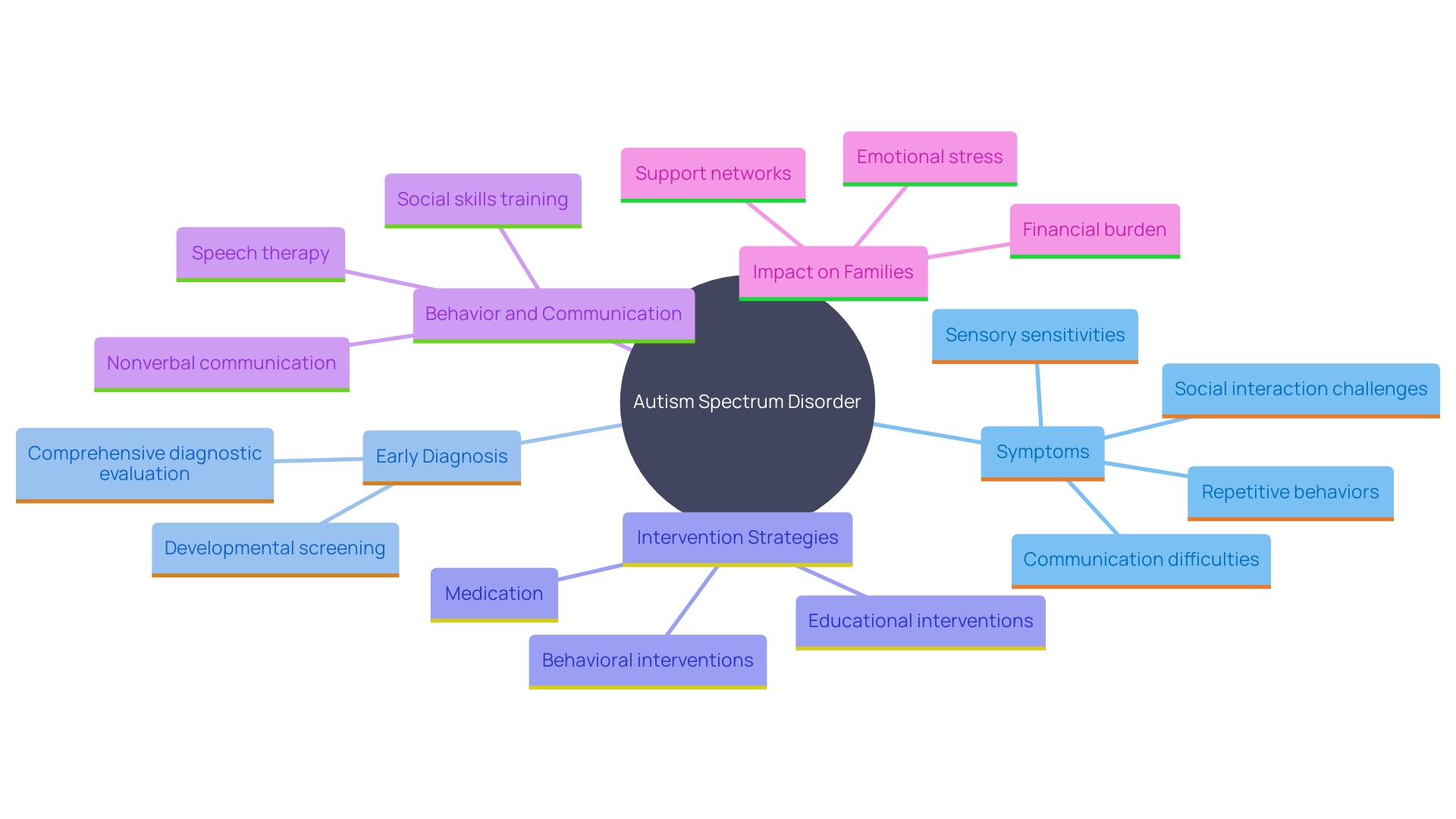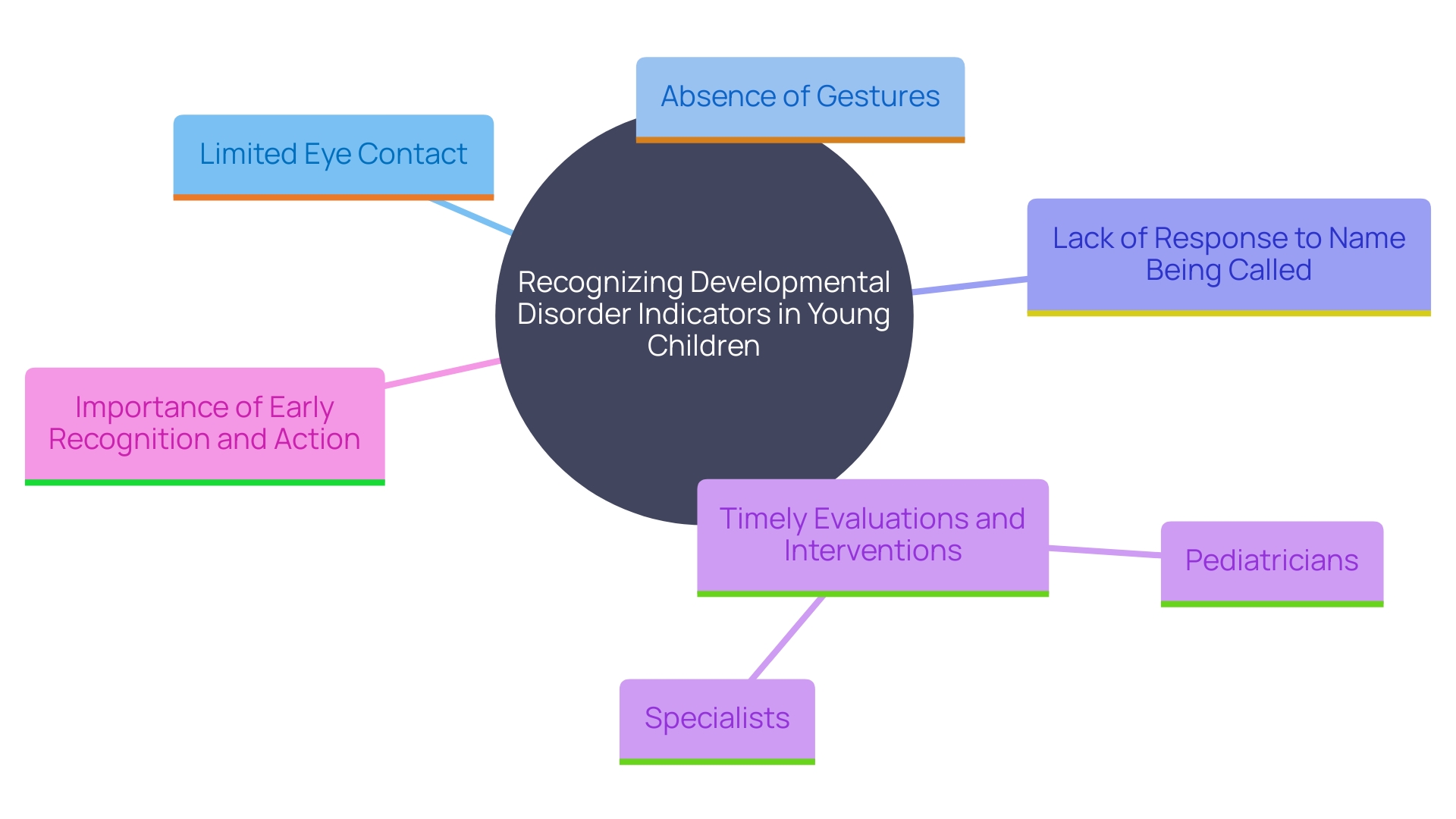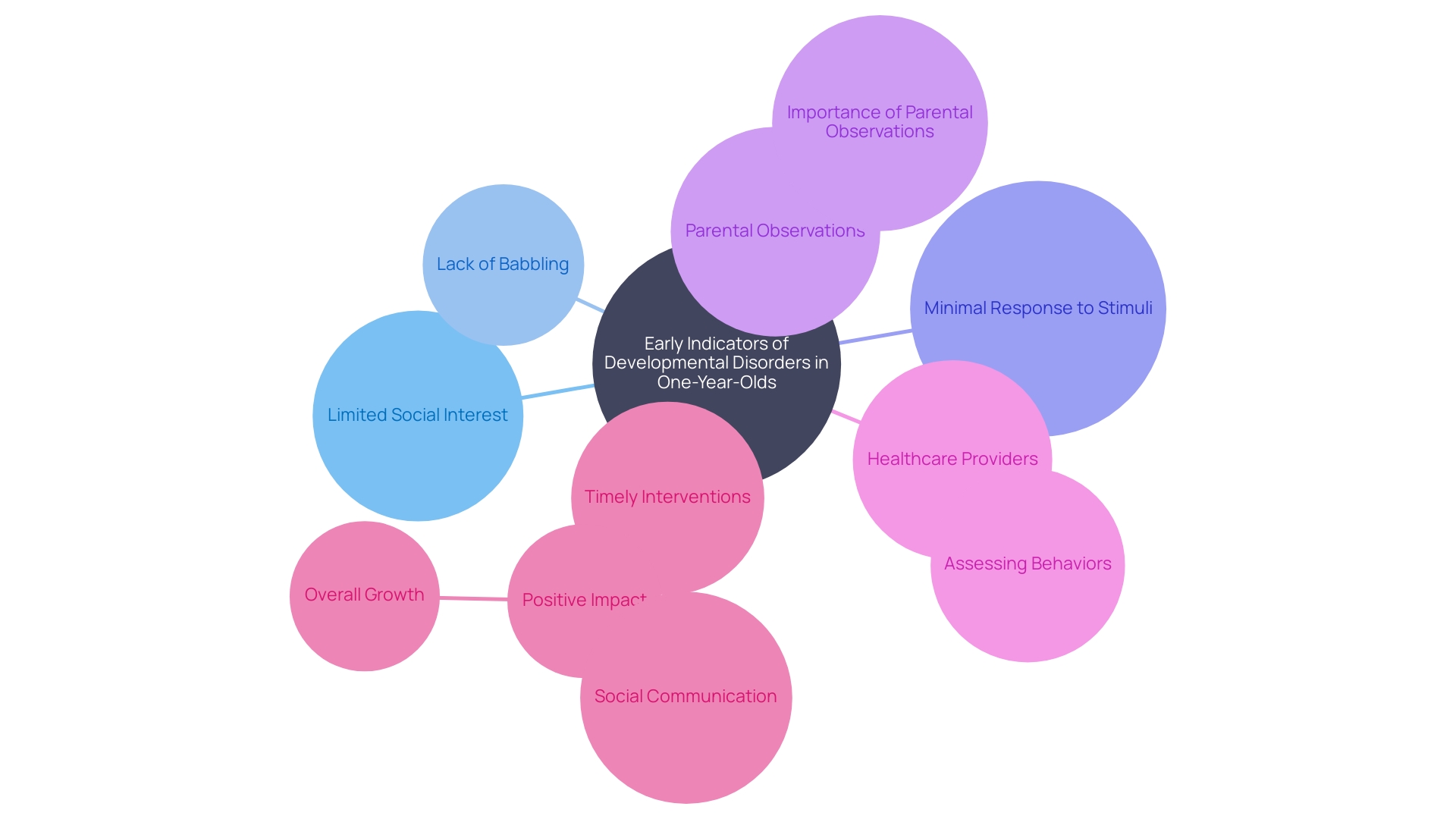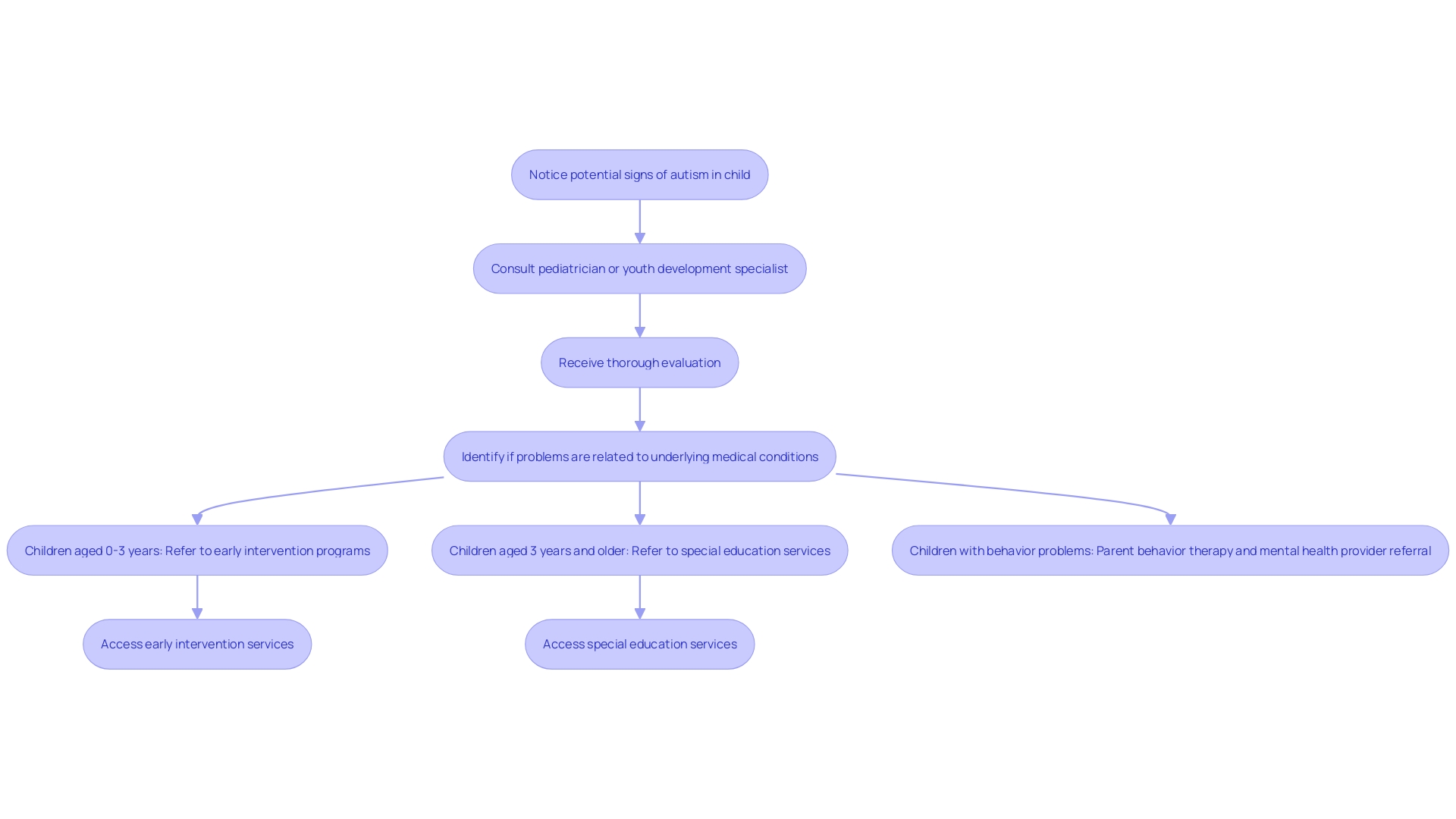Introduction
Autism Spectrum Disorder (ASD) presents a unique set of challenges and opportunities for families. Understanding this complex neurological and developmental condition is the first step towards empowering parents to recognize early signs and seek timely interventions. With symptoms that can vary widely among individuals, early diagnosis and tailored support are crucial for improving outcomes.
This article delves into the intricacies of ASD, highlighting the importance of early intervention, the role of healthcare professionals, and the latest research advancements. By shedding light on early signs and effective strategies, it aims to equip parents with the knowledge and resources needed to support their child's development and well-being.
Understanding Autism Spectrum Disorder
Autism Spectrum Disorder (ASD) is a complex neurological and developmental condition affecting how individuals communicate, interact, and perceive the world. This disorder encompasses a wide range of symptoms and behaviors, which can vary greatly from one person to another. Research indicates that autism typically manifests by age 3, but in some cases, symptoms might be masked by learned coping strategies or may not fully emerge until social demands exceed the individual's capacity to manage them.
Early diagnosis and intervention are crucial for better outcomes. The DSM-5 criteria, utilized by experts for diagnosis, highlight the significance of childhood observation. However, the symptoms can be subtle and require skilled professionals to assess developmental and behavioral levels accurately.
'Recent advances in autism research, such as the findings by the Interagency Autism Coordinating Committee (IACC), highlight the potential of timely screening and diagnosis through innovative methods like telehealth.'. The IACC's 2022 Summary of Advances in Autism Research emphasizes the significance of prompt support and the differences in initial assistance services among various racial and ethnic communities.
Furthermore, comprehending ASD is essential for parents as it enables them to identify indicators promptly and pursue required support. Research indicates that particular strategies, including developmental and naturalistic developmental behavioral approaches, greatly enhance social communication and other fundamental difficulties related to autism. These interventions, when started early, can promote skill gain and contribute to positive long-term outcomes.
Behavior is a critical component of communication for individuals with ASD. It’s important to note that not all individuals with ASD exhibit the same behaviors, and some may not display any of the commonly listed symptoms. Gastrointestinal issues, such as constipation, are also prevalent among youngsters with ASD and can affect their behavior and overall well-being.
In conclusion, understanding the various expressions of ASD and the significance of prompt, customized support can greatly impact the growth and quality of life for youngsters with the condition. As research continues to evolve, it brings hope for more efficient diagnostic tools and better support systems for families navigating this journey.

Early Signs of Autism in 1 Year Olds
Recognizing initial indicators of developmental disorders in young children is essential for prompt action. Around the age of one, parents should be vigilant for specific behaviors that may indicate developmental concerns. Key signs include limited eye contact, an absence of gestures like pointing or waving, and a lack of response when their name is called. Observing these indicators promptly can result in timely evaluations and actions, which are crucial for fostering a young person's growth. Pediatricians often rely on parents' descriptions and their own observations to make initial assessments, sometimes referring families to specialists for comprehensive evaluations. It's important to remember that young individuals with developmental disorders may not show all the listed behaviors, and symptoms can differ significantly. Furthermore, research indicates that timely interventions can greatly enhance social communication and other fundamental challenges linked to this condition, improving long-term results.

Social-Communication Signs in 1 Year Olds
Social-communication skills form the cornerstone of a child's development. For a one-year-old, key indicators of these skills include engaging in interactive play, sharing enjoyment or interest with others, and responding to social cues. These behaviors are crucial as they lay the foundation for later language and social development. Studies emphasize that initial indicators of social interaction challenges may suggest a spectrum condition. Tackling these challenges through early action can be significantly advantageous. Evidence indicates that developmental strategies, especially naturalistic developmental behavioral approaches, can enhance fundamental issues linked to developmental disorders, such as social communication challenges. Pediatric specialists and other medical practitioners have an essential function in directing families toward these measures, making certain they are customized to the young one's developmental requirements. Timely, suitable, and family-supporting measures are crucial, as they directly tackle the fundamental social challenges of the condition, offering the best results for young individuals.
Common Red Flags for Autism in 1 Year Olds
Identifying early indicators of developmental disorders in one-year-olds can be essential for prompt intervention and assistance. Some potential indicators include limited interest in social interactions, lack of babbling or cooing, and minimal response to social stimuli. It's important to acknowledge, however, that not all youngsters with developmental disorders will display these behaviors. According to the American Psychiatric Association's Diagnostic and Statistical Manual, Fifth Edition (DSM-5), the diagnosis of developmental spectrum disorder (ASD) relies heavily on parents' observations and professional evaluations. Therefore, if parents notice these signs, they should consult a healthcare provider for a comprehensive assessment. Timely interventions, such as naturalistic developmental behavioral strategies, have been demonstrated to enhance social communication abilities and overall growth in young individuals with developmental disorders. This proactive approach can significantly enhance the young person's long-term outcomes and quality of life.

What to Do If You Suspect Autism in Your 1 Year Old
If parents notice possible indicators of the condition in their one-year-old, it is essential to take proactive measures. Consulting with a pediatrician or a youth development specialist can lead to a thorough evaluation, which is essential for understanding the needs of the young individual. Timely identification and support are crucial for a young one's development, as they can greatly improve social communication and tackle fundamental issues related to autism. Data indicates that initial developmental support can enhance interactions with caregivers and encourage long-term beneficial results. Healthcare experts can assist families in accessing early intervention programs that are customized for very young individuals, ensuring that their developmental requirements are addressed thoroughly. By seeking timely medical advice, parents can help their children access the necessary support to reach their full potential.

Conclusion
Understanding Autism Spectrum Disorder (ASD) is essential for parents seeking to navigate the complexities of their child's development. The multifaceted nature of ASD, characterized by varying symptoms and behaviors, underscores the necessity for early identification and intervention. Recognizing early signs, such as limited eye contact and social communication difficulties, can lead to timely assessments that significantly improve long-term outcomes.
The role of healthcare professionals in guiding families toward appropriate interventions cannot be overstated, as these resources are crucial for fostering a supportive environment.
The importance of tailored interventions, particularly during the critical early years, is highlighted by research demonstrating their effectiveness in enhancing social communication and other core challenges associated with autism. Parents are encouraged to remain vigilant for red flags and to consult with pediatricians or specialists when concerns arise. This proactive approach not only facilitates early diagnosis but also empowers parents to advocate for their child's needs, ensuring they receive the best possible support.
As new research continues to emerge, the landscape of autism diagnosis and intervention is evolving. Families can take heart knowing that with increased awareness and access to innovative strategies, there is hope for improved developmental outcomes. By fostering an understanding of ASD and engaging in early intervention, parents can play a pivotal role in enhancing their child's quality of life and overall well-being.




